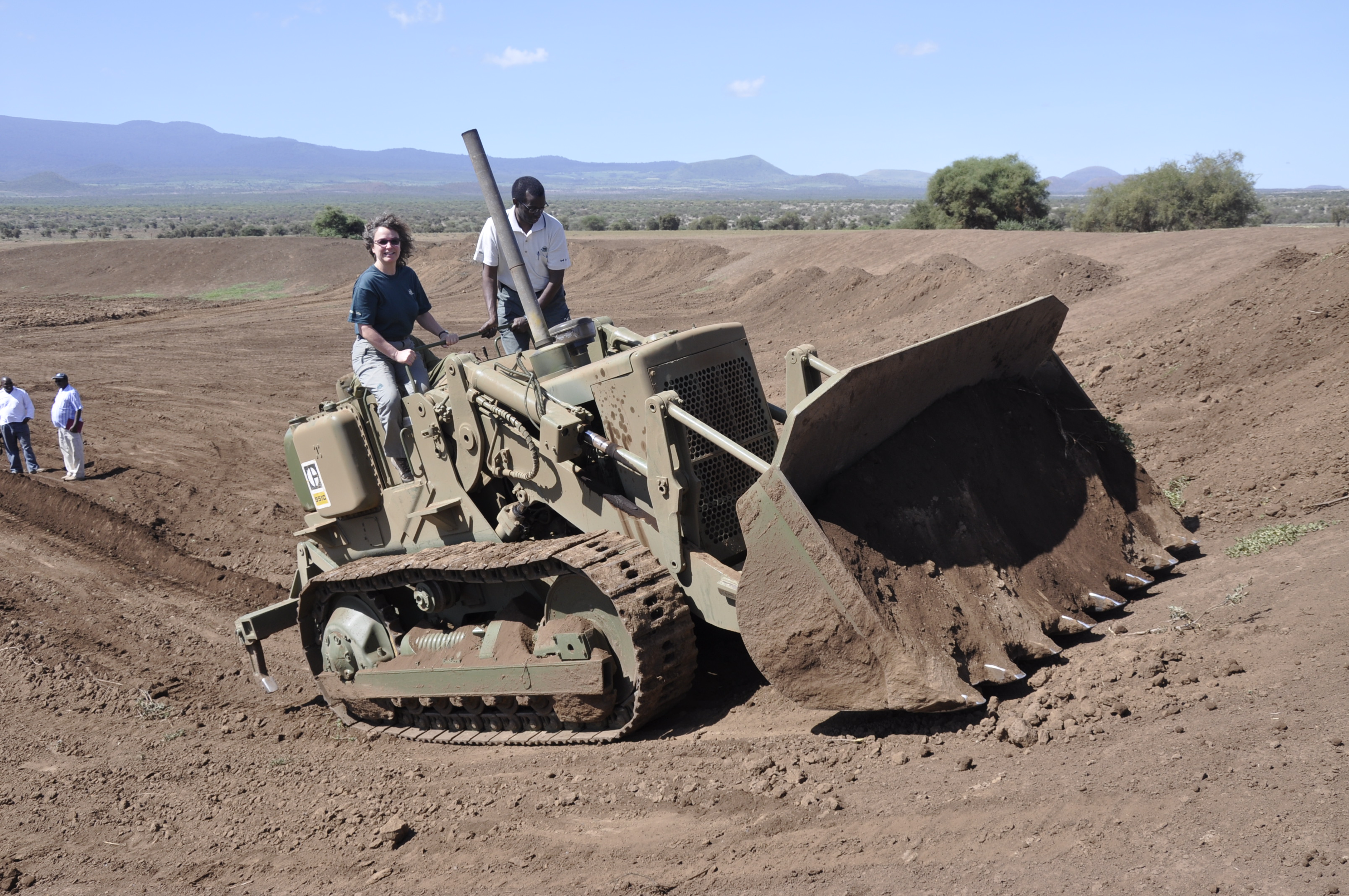Enhancing water availability to reduce conflict
A dam constructed on community land to capture rain water outside Amboseli NP
Wildlife in Amboseli and Tsavo national parks invade community lands during drought periods in search of water while people drive their livestock into the parks in search of pasture. These inverse wildlife-livestock movements usually result in intense human wildlife conflict. The project focused on creating water reservoirs in parks and community areas that could conserve rain water for 4-6 months into the dry season, allowing wildlife and livestock to utilize different parts of the landscape over longer periods and reducing the need for wildlife and livestock to cross park boundaries. Suitable areas for capturing rain water were identified and dams and water pans were excavated. These included rehabilitating some old dams that used to be fed from streams and rivers that had dried up. In addition, important swamps that provide water to wildlife and communities throughout the year were identified and fenced off to reduce degradation due to overuse. Water was pumped into water troughs constructed outside the fence to ensure sustained supply to people, livestock and wildlife. Trees were planted along the swamps to reduce soil erosion.
• Funding was available to undertake relatively expensive excavations
• KWS and communities have good understanding of the hydrology of the land
• Cost of creating dams significantly reduced as KWS has technical knowhow, appropriate equipment and experience for undertaking the tasks.
• Good community and stakeholder support
• Under climate change, it may be necessary for communities and park agencies to agree on mechanisms of sharing water resources during times of scarcity in order to prevent human wildlife conflict
• Localized environmental solutions such as swamp protection can yield enormous benefits to many people and prevent human wildlife conflicts at different geographical scales.
• Rain water harvesting can be a low cost strategy that can minimize water-related conflicts.
• Adaptation strategies that enhance the provision of ecosystem services while reducing resource use conflicts can attract support from diverse partners.

